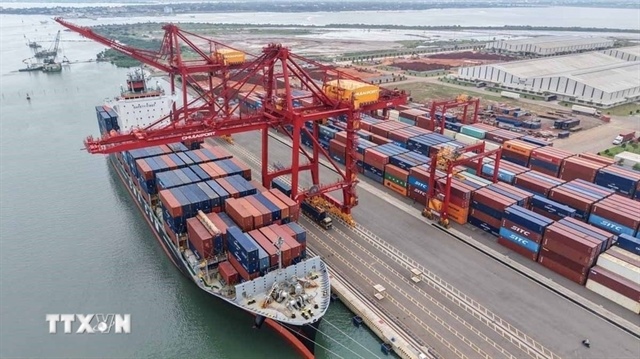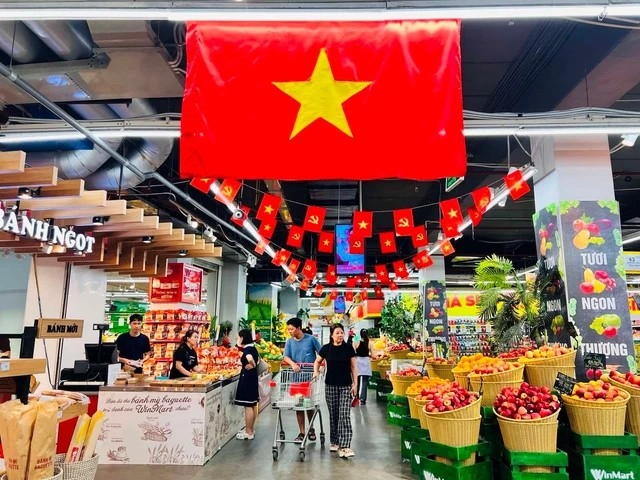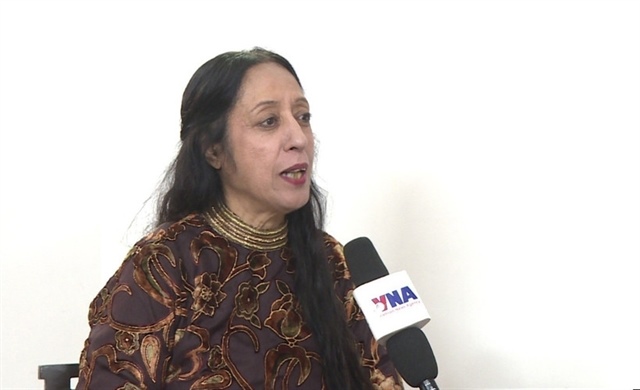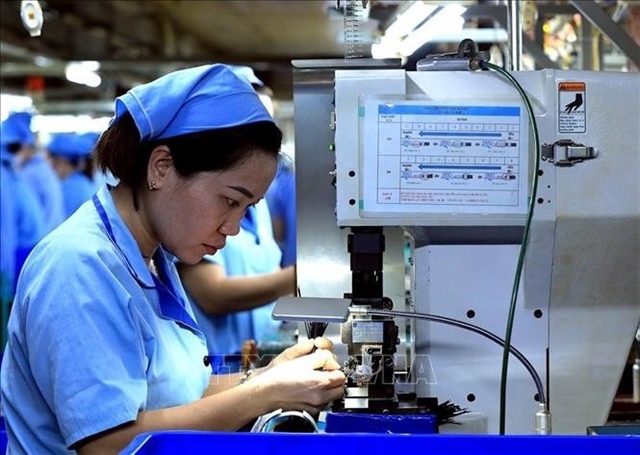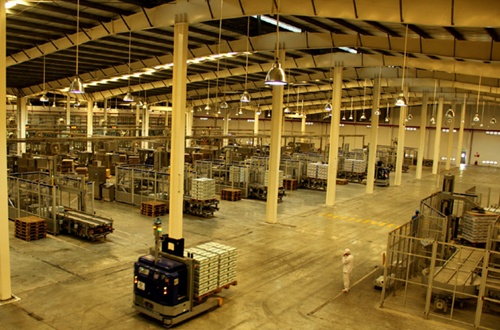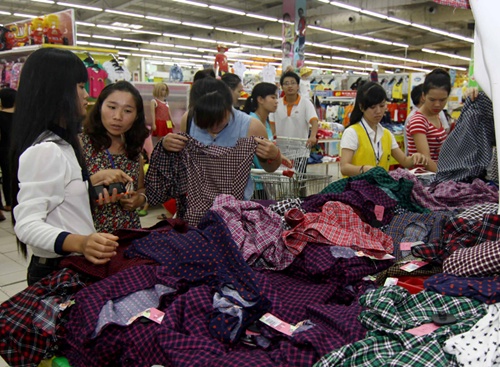Middle income trap a risk: experts
Middle income trap a risk: experts
Viet Nam needs to shift from a low middle-income to higher-income nation and avoid the middle-income trap by reforming policy content, structure and organisation, heard an international seminar that ended Friday in HCM City.
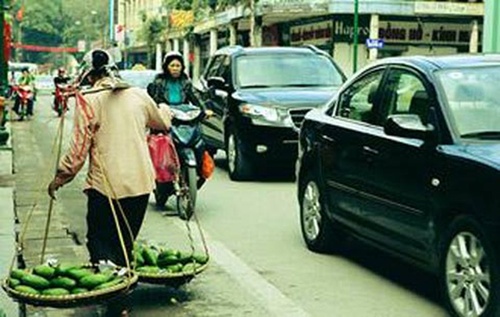
Pham Thi Minh Uyen, from the Trade University, said based on the theory of the middle-income trap of Japanese economist Kenichi Ohno Viet Nam was now stuck in a low middle-income trap.
Per capita income of Viet Nam surpassed US$1,000 in 2008 (currently about $2,000) so the country is now classified as a low middle-income country, according to the criteria of the World Bank.Experts have said that Viet Nam relies too heavily on extracted resources, monoculture exports, subsistence agriculture and foreign aid.
Traditional industries such as mining and agriculture, which have the most potential, remain small.
Without strong reform, especially if Viet Nam does not resolve the issue of corruption, it will be difficult for the country to escape from the low middle-income trap, they say.
Vo Tri Hao, of HCM City University of Economics, said that the capital, labour and land markets had developed slowly, as well as the reform of State-owned enterprises (SOEs).
Many small SOEs have been equitised or privatised, but large SOEs were reorganised into economic groups and turned into interest groups. These are protected and enjoy privileges such as priority access to capital, land and investment information, according to Hao.
Meanwhile, private enterprises, especially SMEs, find it difficult to access capital and land to build production facilities.
The distribution of resources for public investment is also distorted by corruption and interest groups, he added.
Meanwhile, according to Hao, many economists have said there were too many incentives for FDI businesses, and that foreign firms had not cooperated with domestic businesses, failing to transfer technology to local companies.
As most Vietnamese enterprises are small, their participation in the global supply chain is limited.
Only 36 per cent of domestic firms have been able to join the world's production network while the percentage is 60 per cent in Malaysia and Thailand.
Economic experts have underscored the need for the country to speed up reform to fuel economic growth and integrate into the world economy.
Scholars researching economies similar to Viet Nam also said that Indonesia and Bangladesh faced the same issues.
Challenges
Viet Nam continues to cope with challenges such as the inefficiency of State-run enterprises and public investment.
Speaking at the event, Nguyen Duc Thanh, of Institute for Economic and Policy Research, said a major challenge was to retain high economic growth while ensuring environmental and social sustainability.
The Trans Pacific Partnership (TPP) would enable Viet Nam to increase exports to other Pacific Rim countries, including the US, which is one of Viet Nam's biggest export markets, he said.
The TPP countries account for 28 per cent of the world's trade and 37 per cent of the world's gross domestic product (GDP).
He added that the TPP and the Viet Nam-EU FTA would create big opportunities for Viet Nam but also put pressure on the country to boost reform.
However, whether the country can make the most of these opportunities would depend on its own efforts, he said.
Around 21 per cent of small- and medium-d enterprises (SMEs) in Viet Nam take part in the global supply chain, compared to 30 per cent in Thailand and 46 per cent in Malaysia.
"This is why Vietnamese SMEs benefit little from foreign direct investment (FDI) projects in terms of technology transfer and productivity improvement," Hao said.
Thanh said that Viet Nam had drawn up a clear roadmap for reform and that it had resources for reform but lacked strong determination.
"Time waits for no one and opportunities will slip away soon in this rapidly changing world. We must take action right now," he said.
Most speakers agreed that the new FTAs would bring opportunities for Viet Nam to reform institutions and build a model for a market-oriented economy.
Dang Quang Vinh, of the Central Institute for Economic Management, said Viet Nam would have to face many challenges when the Viet Nam-EU FTA takes effect.
Such challenges include the restructuring of SOEs, Government procurement, institutional reforms, geographical indications, and transparency and investor protection.
He said institutional reforms were pivotal to improve the business environment and the legal system, and that Viet Nam must respect intellectual property rights, restructure SOEs, remove subsidies and foster competition, among others.
Prof Hansjorg Herr, of the Berlin School of Economics, said many trade agreements had recently been signed with Viet Nam, but that these pose risks.
Many private businesses had not grown well enough, State-owned companies were influenced by politics and the economy was affected by FDI businesses.
Viet Nam was still an outsourcing exporter, which only created benefits for other countries, and was still stuck in the low middle-income trap.
Recently the World Bank released a new report that lays out the path for Viet Nam to reach upper middle-income status in two decades.
The Viet Nam 2035 report, themed "Toward Prosperity, Creativity, Equity and Democracy", suggests that Viet Nam foster private sector competitiveness, promote social inclusion, and bolster the state's effectiveness to climb up the economic ladder into a higher bracket.
Without this, Viet Nam will find it very hard to avoid the "middle-income trap" and will fall well short of its significant potential.
Viet Nam's economy was estimated to grow 5.88 per cent per year during 2011-15, the slowest pace since 2010.
Viet Nam became a low middle-income country (MIC) in 2008, and remains at that level.
Recently, Japanese economist Kenichi Ohno said that Viet Nam had fallen into the middle-income trap, and his diagnosis sparked a heated debate about the country's true economic situation.
The middle income trap is a theorised economic development situation, where a country which attains a certain income will get stuck at that level.
A country in the middle income trap will have lost their competitive edge in the export of manufactured goods because their wages are on a rising trend. However they are unable to keep up with economically more developed economies in the high-valued added market.
The seminar in HCM City was organised by the HCM City University of Social Sciences and Humanities and the Friedrich Ebert Stiftung (FES) Foundation.


